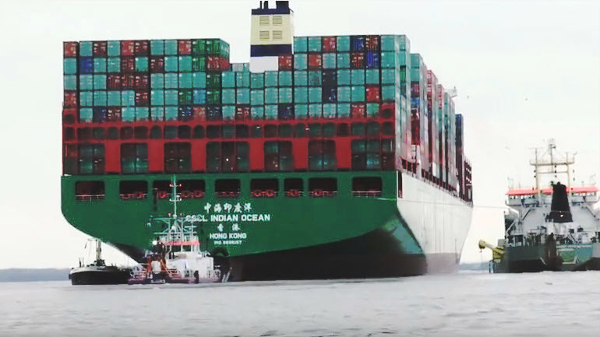Setting up a ₹25,000-crore Maritime Development Fund (MDF) and a pan-India port regulatory authority are among the highlights of the Maritime India Vision 2030, a ten-year blue-print for the maritime sector, to be released by Prime Minister Narendra Modi at the Maritime India Summit in November.
Maritime India Vision 2030, the latest avatar of the Sagarmala programme, outlines a raft of policy initiatives and development projects involving an investment of ₹3.5 lakh crore to double cargo volumes to 2,600 million tonnes (mt), which will help create over 2 million additional jobs (direct and indirect) and unlock additional annual revenue of about ₹20,000 crore for state-owned major ports.
The MDF seeks to provide low cost, long-tenure financing to the sector with the Centre contributing ₹2,500 crore over seven years, according to the document reviewed by BusinessLine. This is part of a plan to promote shipping tonnage (capacity) under the Indian flag.
Updated law
The regulatory authority will be set up under the new Indian Ports Act (to replace the century-old Indian Ports Act 1908) for enabling oversight across major and non-major ports, enhance institutional coverage for ports and provide for structured growth of the ports sector to boost investor confidence.
Dispute resolution
It will be tasked with national port planning as well as development of new ports, regulatng scheduled ports, act on complaints and resolve disputes between major and non-major ports, anti-competition etc.
The coastal States will have to concur with this proposal but are unlikely to lend support as it would curtail their freedom to develop ports under their watch, an industry consultant said.
The Vision document says that the government will build three mega major ports each with a capacity of over 300 mt of cargo, raise the level of Indian cargo transhipped within the country to over 75 per cent from 25 per cent, reduce vessel-related charges which are 2-6 times higher than global ports, deepen the draft to 14-18 metres based on cargo profile and vessel calls. At least three major ports will have 18-m draft.
The Vision suggests tapping the over 15,000 acres of land owned by major ports to accelerate port-led industrialisation for which a revised land use policy is being finalised by the Shipping Ministry. It calls for extending low cost, long-term financing for inland vessels with the support of a Riverine Development Fund (RDF) and for extending the coverage of the tonnage tax scheme (applicable to ocean going ships and dredgers) to inland vessels also to enhance the availability of such vessels.
The Eastern Waterways Connectivity Transport Grid project to develop regional connectivity with Bangladesh, Nepal, Bhutan and Myanmar also forms part of the Vision.
Source:THBL
You may also like
-
Trade Connect E-platform For Exports Is Single Window, Fast, Accessible And Transformational: Shri Piyush Goyal
-
Dot Simplifies Approval Processes For Telecom Licenses And Wireless Equipment
-
Coal Production and Supply Trends on Positive Trajectory
-
Union Minister To Release Booklets On Promotion Of Indigenous Species & Conservation Of States Fishes
-
2nd India-Japan Finance Dialogue held in Tokyo on 6th September, 2024
